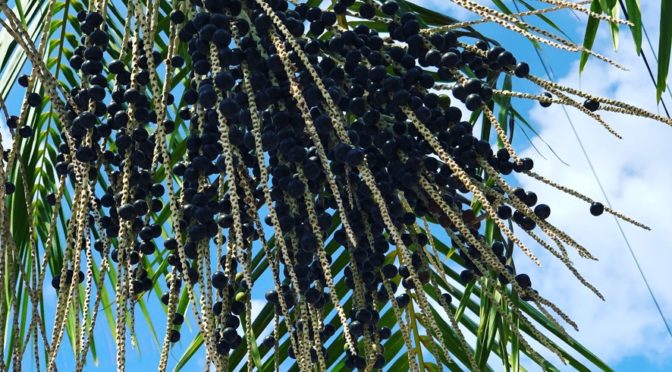Fruit of Brazil: The Fascinating History of the Acai Berry
Known as the ‘fruit that cries’ in Portuguese, this tasty fruit of Brazil has a fascinating history that rivals it’s many health properties
Keyword(s): fruit of brazil
Your average influencer today probably has no idea that the acai in their aesthetically-pleasing smoothie bowl been around for centuries. This ancient fruit has a deep-rooted history that lies at the heart of the Amazonian culture.
Thanks to modern culture, the acai berry has catapulted to stardom. Pronounced ”ah-sigh-ee” for those who are still perplexed by the unusual name, this iconic fruit of Brazil is considered a superfood — lauded for its anti-oxidant properties.
But how does acai grow and how is it harvested? How did it find the fame it has in today’s modern world? Learn more in this blog.
A Brief History of the Iconic Fruit of Brazil: The Acai Berry
Though this fruit has long been a part of Amazonian and Brazilian culture, it was only introduced to the western world in the early 1990s. As the 2000s approached, only then did its popularity begin to skyrocket.
But where did it all start?
The tribes of the Amazonian Rainforest have used the acai berry to treat a range of ailments for thousands of years. Packed with fiber, healthy fats, and plenty of polyphenols, the acai berry is one of thousands of berries that the Amazonian tribe people use for medicinal and health purposes.
According to Amazonian culture, they believe that acai is beneficial for strengthening the immune system, fighting off infection, and heart health. And let’s not forget, as nature’s natural form of Viagra for prostate control and better sex.
In Brazil, it was discovered that acai is also beneficial in warding off schistosomiasis — known as ”snail fever” or bilharzia. Transmitted by freshwater snails, it affects millions of Brazilians every year. The berry is also beneficial in the treatment of common infections, such as staphylococcus aureus.
How Is Acai Grown and Harvested?
This berry is found on a tall palm tree native to Brazil and the Amazonian Rainforest. These palms have a long, thin trunk and can grow up to 82-feet high. The acai berry grows in bunches underneath the palm leaves in long, string-like clusters.
Today, acai is a sought-after crop and is mass-produced by Brazil, which means that acai palms are grown across hundreds of thousands of acres of the Amazon River delta.
The berries are traditionally picked by hand by ribeirinhos, also known as river people in the Amazon. They harvest and prepare the acai the same way it has been done for centuries by shimmying up the long trunk of the tree and cutting the acai bunches from the top of the palm with a blade.
The berries then soak for hours to soften the skin and flesh, which is then rubbed off by hand into a thick, purple pulp. In Amazonian culture, acai pulp is a staple part of their diet. It’s eaten with every single meal, accompanied by fish, game, or by itself as a soup.
Once the acai is harvested into baskets and trucks for commercial use, it must be produced or frozen no longer than 24-hours after it’s picked. Each palm tree is capable of producing up to 44 pounds (20kgs) of fruit per year.
How Did Acai Get Its Name?
Acai is actually an adaption of the Portuguese word: ïwaca’i, which means the ”fruit that cries”. This is because the acai berry expels a certain amount of water when it’s harvested.
But there is also an Amazonian folklore tale about how the berry got its name. According to this legend, chief Itaqui ordered all newborns in his tribe to death because of an impending famine. However, when his own daughter, Iaçá, gave birth and saw her newborn sacrificed, she too died beneath a newly sprouted tree.
Legend has it that this tree sprouted berries that the tribe then lived off of during the famine, and so it was named ”Acai” — the daughter’s name spelled backward.
Acai Today: A Quick Trajectory
Twenty years ago, very little was known about the acai berry outside of Brazil. However, it finally found popularity when Jeremy and Ryan Black, from Southern California, along with their colleague, Edmund Nichols began exporting the fruit to America.
But before this, and for thousands of years, acai consumption has not extended outside of the Amazon River delta. In the 1970s, the river people of this region began to spread the popularity of acai throughout Brazil’s northern Amazonian cities.
After that, the iconic fruit of Brazil began to move south throughout the 1980s — often used as a superfood fruit to bolster the health of athletes, surfers, and popular jujitsu fighters throughout Brazil.
During this time, Brazillian locals consumed acai in frozen form, as an ice-cream, smoothie, or ”frozen Slurpee bowl” because of how quickly it degrades. So essentially, the acai bowl became popular in Brazil decades before it ever became a trend in the western world!
In the early 1990s, the Black brothers discovered acai and decided to bring it to the masses in America. Since then, acai has followed an upwards trajectory and is embraced as a superfood due to its many beneficial health properties.
You can find acai products in just about any supermarket, café, or restaurant across the globe in the form of acai smoothies, acai bowls, acai powders, ice-cream, acai candy, jelly — the list goes on.
Acai and Its Nutritional Content
It’s no secret that acai is popular because it not only has a rich, earthy, and slightly tart flavor, but the berry is very nutritionally dense. It’s also pretty low in calories, one of the many reasons it’s classified as a superfood.
For example, if you ate 100-grams of dry powder-form acai, it would set you back 534 calories. But you really don’t need to eat this much if you’re mixing acai into your smoothie or creating an acai bowl.
In terms of nutrition, acai contains a great amount of fiber, with 52-grams of carbohydrates, 8-grams of protein, and 33-grams of fat per 100-grams.
It’s a low-fat berry, and high in antioxidants, omega fatty acids, and essential amino acids, which can help to lower cholesterol, boost brain function and immunity, improve heart health, and more.
Looking for Sustainably Harvested Acai?
This iconic fruit of Brazil has come a long way since its humble beginnings and has cemented itself as a brilliant food source for those who are passionate about maintaining their health. The added bonus is that it’s delicious, too!
If you’re looking for a reliable supplier or source of acai, Nativo Acai is your go-to. We offer the highest quality acai products, closest to their natural form. Browse here to learn more about our sustainably sourced acai.

